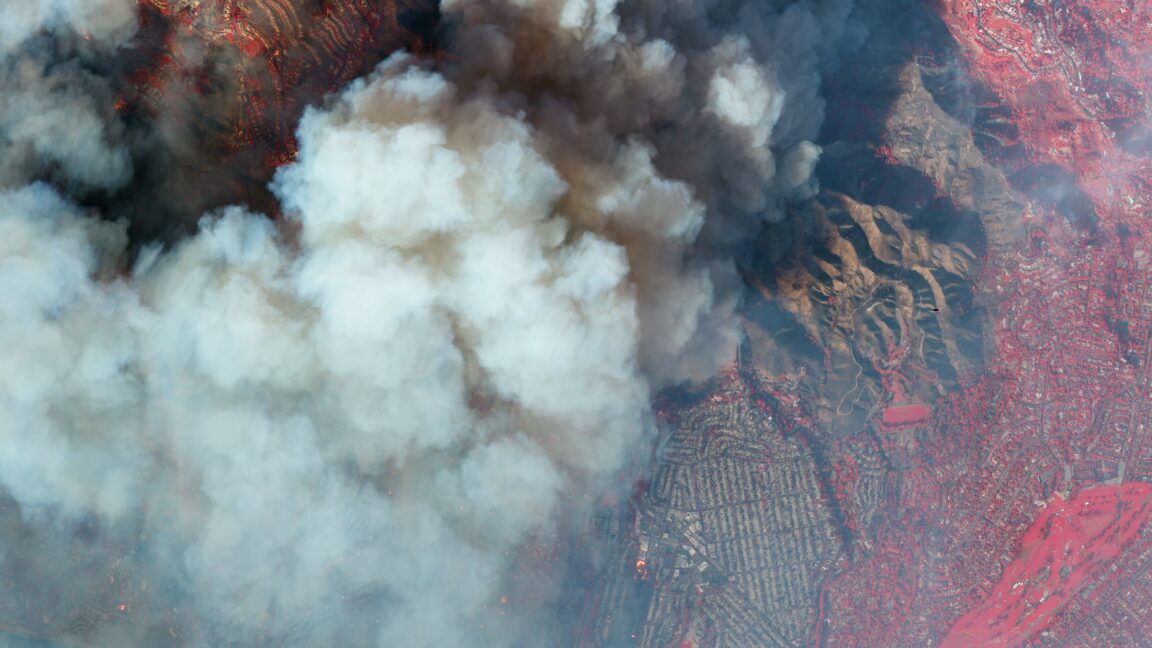
ARSTECHNICA.COM
Heres what we know, and what we dont, about the awful Palisades wildfire
A terrible situation Heres what we know, and what we dont, about the awful Palisades wildfire "I think weve got more questions than answers at this point." Eric Berger Jan 9, 2025 5:31 pm | 91 SkySat (including near-infrared) image of the Palisades Fire on January 8, 2025. Credit: Planet SkySat (including near-infrared) image of the Palisades Fire on January 8, 2025. Credit: Planet Story textSizeSmallStandardLargeWidth *StandardWideLinksStandardOrange* Subscribers only Learn moreMore than 130,000 residents in Southern California face the catastrophic loss of property, and possibly life, as a series of wildfires have brought devastation to the region this week.The most notable fire developed late Monday or early Tuesday in the Santa Monica Mountains, to the north of Los Angeles, and quickly spread to threaten the Pacific Palisades neighborhood. This fire has already become the most destructive fire in the history of the Los Angeles region, and by some estimates, it may become the costliest wildfire of all time, anywhere in the world.Several additional wildfires have broken out in the vicinity of Los Angeles, and firefighters there have struggled to contain the multiple outbreaks, including the ongoing Palisades fire. To date, more than 2,000 structures have been burned and that total will assuredly increase. Ongoing, on-the-ground coverage is available from the Los Angeles Times, which has removed its paywall around fire-related news for now.Disasters such as these wildfiresespecially ones affecting affluent areas of the second-most populous city of the United Statescapture public attention and drive debate. Some of this debate is honest, and some is dishonest. In this post, we will attempt to shed some light on what is known and what is not about these particular wildfires.Caused by nature and humansMost natural disasters occurring today are a combination of natural and human-caused factors; the former because nature has always produced dramatic and damaging events, and the latter because humans continue to build houses and develop vulnerable areas, as well as climate change, which has loaded the dice in terms of the frequency and severity of natural disasters.Let's start with the meteorology. The Palisades wildfire and other nearby conflagrations were well-predicted days in advance. After a typically arid summer and fall, the Los Angeles area has also had a dry winter so far. December, January, February, and March are usually the wettest months in the region by far. More than 80 percent of Los Angeles' rain comes during these colder months. But this year, during December, the region received, on average, less than one-tenth of an inch of rainfall. Normal totals are on the order of 2.5 inches in December.So, the foliage in the area was already very dry, effectively extending the region's wildfire season. Then, strong Santa Ana winds were predicted for this week due, in part, to the extreme cold observed in the eastern United States and high pressure over the Great Basin region of the country. "Red flag" winds were forecast locally, which indicates that winds could combine with dry grounds to spread wildfires efficiently. The direct cause of the Palisades fire is yet unknown.Wildfires during the winter months in California are not a normal occurrence, but they are not unprecedented either. Scientists, however, generally agree that a warmer planet is extending wildfire seasons such as those observed in California."Climate change, including increased heat, extended drought, and a thirsty atmosphere, has been a key driver in increasing the risk and extent of wildfires in the western United States during the last two decades," the US National Oceanic and Atmospheric Administration concludes. "Wildfires require the alignment of a number of factors, including temperature, humidity, and the lack of moisture in fuels, such as trees, shrubs, grasses, and forest debris. All these factors have strong direct or indirect ties to climate variability and climate change."Descent into political gamesmanshipInevitably, of course, such disasters become political. Los Angeles Mayor Karen Bass has taken considerable flack for being out of the country this week as part of a delegation to celebrate the inauguration of Ghana President John Mahama. The Los Angeles Department of Water and Power, the citys utility, has also been criticized for the lack of water pressure available at fire hydrants to fight the fire."The chronic under-investment in the city of Los Angeles in our public infrastructure and our public safety partners was evident and on full display over the last 24 hours," LA City Councilmember Traci Park, who represents Pacific Palisades, said Wednesday during a news conference. "I am extremely concerned about this. Im already working with my team to take a closer look at this, and I think weve got more questions than answers at this point."That's an important point to make. Regarding the early stages of natural disasters, we often have many more questions than answers. Undoubtedly, there were failings among the public officials and institutions that worsened the fire. Evacuations certainly could be handled much better. Climate change is likely a factor contributing to the background conditions that amplified the fire spreading. In heated times such as these, when trying to discern the truth, it is probably worth questioning the motivations of those who are most certain about their convictions.For now, the focus should be on helping the many families who have had to evacuate their homes or, even worse, lost them. The fires are yet raging, and additional strong winds are forecast in a few days' time.Eric BergerSenior Space EditorEric BergerSenior Space Editor Eric Berger is the senior space editor at Ars Technica, covering everything from astronomy to private space to NASA policy, and author of two books: Liftoff, about the rise of SpaceX; and Reentry, on the development of the Falcon 9 rocket and Dragon. A certified meteorologist, Eric lives in Houston. 91 Comments
0 Kommentare
0 Anteile
140 Ansichten


